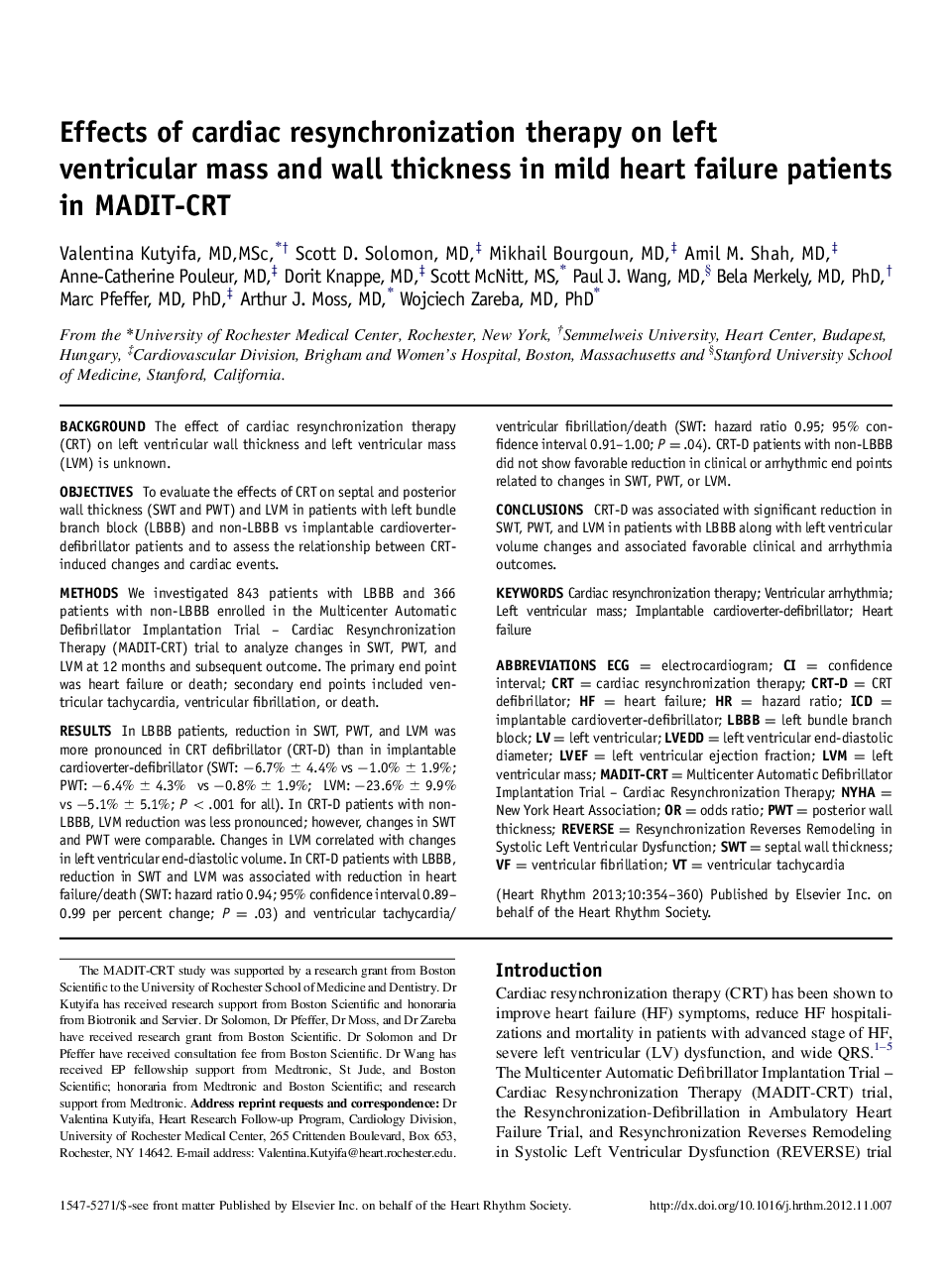| کد مقاله | کد نشریه | سال انتشار | مقاله انگلیسی | نسخه تمام متن |
|---|---|---|---|---|
| 2922228 | 1175838 | 2013 | 7 صفحه PDF | دانلود رایگان |

BackgroundThe effect of cardiac resynchronization therapy (CRT) on left ventricular wall thickness and left ventricular mass (LVM) is unknown.ObjectivesTo evaluate the effects of CRT on septal and posterior wall thickness (SWT and PWT) and LVM in patients with left bundle branch block (LBBB) and non-LBBB vs implantable cardioverter-defibrillator patients and to assess the relationship between CRT-induced changes and cardiac events.MethodsWe investigated 843 patients with LBBB and 366 patients with non-LBBB enrolled in the Multicenter Automatic Defibrillator Implantation Trial – Cardiac Resynchronization Therapy (MADIT-CRT) trial to analyze changes in SWT, PWT, and LVM at 12 months and subsequent outcome. The primary end point was heart failure or death; secondary end points included ventricular tachycardia, ventricular fibrillation, or death.ResultsIn LBBB patients, reduction in SWT, PWT, and LVM was more pronounced in CRT defibrillator (CRT-D) than in implantable cardioverter-defibrillator (SWT:−6.7%±4.4% vs−1.0%±1.9%; PWT:−6.4%±4.3% vs−0.8%±1.9%; LVM:−23.6%±9.9% vs−5.1%±5.1%; P<.001 for all). In CRT-D patients with non-LBBB, LVM reduction was less pronounced; however, changes in SWT and PWT were comparable. Changes in LVM correlated with changes in left ventricular end-diastolic volume. In CRT-D patients with LBBB, reduction in SWT and LVM was associated with reduction in heart failure/death (SWT: hazard ratio 0.94; 95% confidence interval 0.89–0.99 per percent change; P = .03) and ventricular tachycardia/ventricular fibrillation/death (SWT: hazard ratio 0.95; 95% confidence interval 0.91–1.00; P = .04). CRT-D patients with non-LBBB did not show favorable reduction in clinical or arrhythmic end points related to changes in SWT, PWT, or LVM.ConclusionsCRT-D was associated with significant reduction in SWT, PWT, and LVM in patients with LBBB along with left ventricular volume changes and associated favorable clinical and arrhythmia outcomes.
Journal: Heart Rhythm - Volume 10, Issue 3, March 2013, Pages 354–360